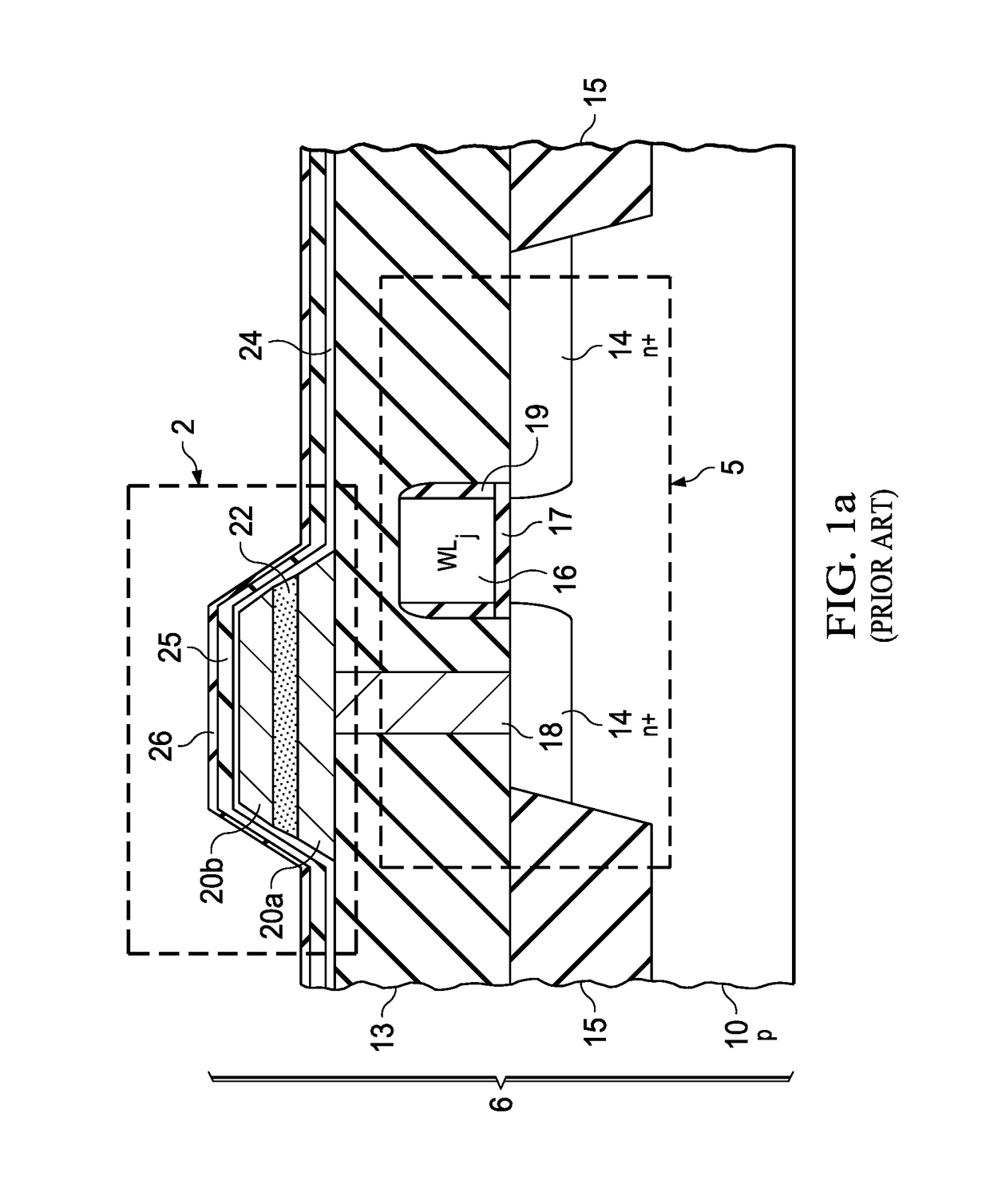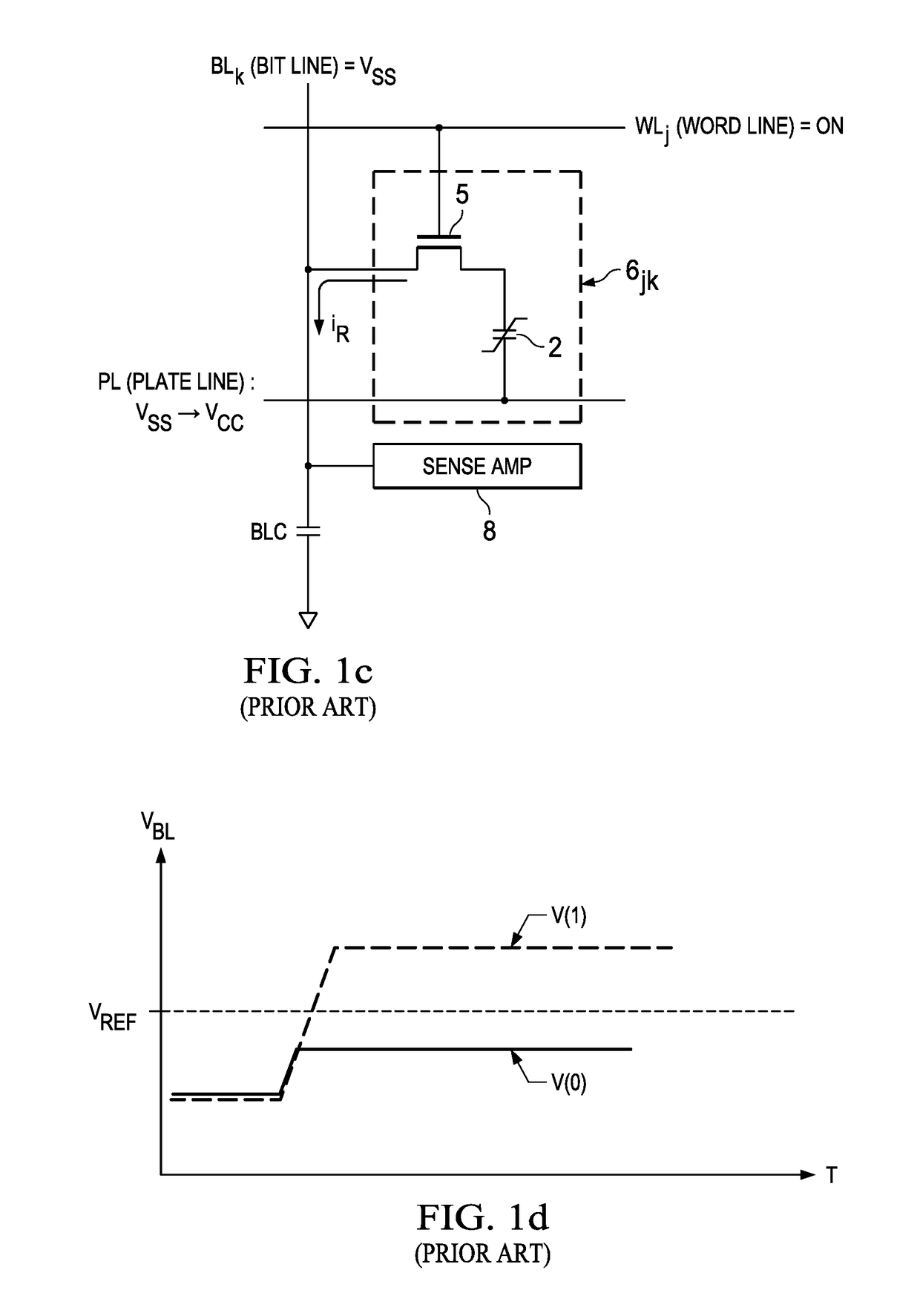Low-Temperature Passivation of Ferroelectric Integrated Circuits for Enhanced Polarization Performance
a ferroelectric integrated circuit and low-temperature passivation technology, applied in the direction of semiconductor devices, semiconductor/solid-state device details, electrical apparatus, etc., can solve the problems of ferroelectric capacitors, memory incorporating such devices are vulnerable, conventional mos capacitors lose their stored charge, etc., and achieve enhanced polarization characteristics of ferroelectric materials.
- Summary
- Abstract
- Description
- Claims
- Application Information
AI Technical Summary
Benefits of technology
Problems solved by technology
Method used
Image
Examples
Embodiment Construction
[0031]The one or more embodiments described in this specification are implemented into integrated circuits with ferroelectric memories such as ferroelectric random access memories (FRAMs), as it is contemplated that such implementation is particularly advantageous in that context. However, it is also contemplated that concepts of this invention may be beneficially applied to in other applications, for example integrated circuits with other types of ferroelectric structures and devices. Accordingly, it is to be understood that the following description is provided by way of example only, and is not intended to limit the true scope of this invention as claimed.
[0032]It is known in the art that cured polyimide adheres well to the surface of an integrated circuit, and that such adhesion is important in the ability of the polyimide film to serve as a stress relief agent for the integrated circuit when packaged, for example in a molded plastic package. As mentioned above in connection wit...
PUM
 Login to View More
Login to View More Abstract
Description
Claims
Application Information
 Login to View More
Login to View More - R&D
- Intellectual Property
- Life Sciences
- Materials
- Tech Scout
- Unparalleled Data Quality
- Higher Quality Content
- 60% Fewer Hallucinations
Browse by: Latest US Patents, China's latest patents, Technical Efficacy Thesaurus, Application Domain, Technology Topic, Popular Technical Reports.
© 2025 PatSnap. All rights reserved.Legal|Privacy policy|Modern Slavery Act Transparency Statement|Sitemap|About US| Contact US: help@patsnap.com



